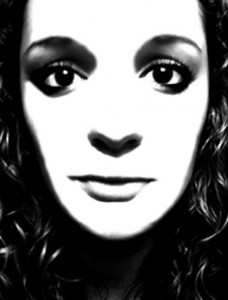Despite the complexity of human faces as visual stimuli, we rapidly and unthinkingly identify the faces of our peers. Our remarkable efficiency in this computationally formidable task suggests that our visual perceptual system employs a specific mechanism dedicated to processing facial identity. Among the strongest evidence for the existence of such a mechanism comes from a disorder called prosopagnosia, or “face blindness.”
Prosopagnosia is a selective and often severe deficit in the ability to recognize others’ faces. People suffering from the disorder are often unable to recognize their friends and family members by face alone, instead relying on vocal cues for proper identification. They cannot name images of celebrities, even if they can describe who the celebrity is.
They often describe faces as nearly indistinguishable; one patient characterized faces as “strangely flat, white with emphatic dark eyes, as if made from a flat surface, like white, oval plates, all alike.” However, their general visual ability and recognition of non-face objects often remains intact.
Prosopagnosia is a heterogeneous disorder, with variableseverity, selectivity, and neural basis. It has been sub-divided into two broad classes based on the source of the condition.
Acquired prosopagnosia results from damage to the occipital and/or ventral temporal lobe, often including the fusiform face area or occipital face area. This was first documented in 1844, although reports of acquired face blindness date to antiquity.
In contrast, developmental (or congenital) prosopagnosia is typically present from birth. This class was discovered far more recently, with the first report in 1976.
While its prevalence is not well established, a German group recently proposed that developmental prosopagnosia is present in two percent of the general population.
Genetic factors likely contribute to developmental prosopagnosia, as cases can run in families. The renowned primatologist Jane Goodall, for instance, is a developmental prosopagnosic, along with her sister.
Symptoms of prosopagnosia are assessed using face discrimination tasks, in which the subject is shown photographs of faces and must decide if they represent the same person. The photos may differ in brightness and contrast or viewpoint.
Also used are face memory tasks, such as deciding whether a face belongs to a set of previously presented faces. Individuals with severe prosopagnosia may score four to six standard deviations below the average on such measures.
Prosopagnosia is often reported along with other perceptual deficits, including partial blindness, cerebral achromatopsia (inability to perceive color), object agnosia (inability to recognize objects), topographagnosia (navigational deficits), and deficits in interpreting facial expression.
In acquired prosopagnosia, these overlaps are unsurprising: neurological damage is typically diffuse, and brain regions involved in face processing are near both object recognition areas, such as the lateral occipital complex, and scene processing areas, such as the parahippocampal place area. Some brain-damaged patients show one or more of these other perceptual deficits without prosopagnosia.
Perhaps the most intriguing cases of prosopagnosia are those in which the deficit is highly specific to face recognition. In these instances, occurring in both acquired and developmental cases, patients have no other visual deficits besides face processing.
Even within the domain of face processing, these patients may properly judge facial expression, gender, and age. They often perform similarly to typical subjects on judgments of the trustworthiness or attractiveness of a face. They may also be able to detect a face-like pattern from a superficially meaningless visual array, and they can tell when an object is or is not a face.
This suggests that different components of face perception are dissociable and that prosopagnosia primarily involves a deficit specific to the processing of facial identity. Given the crucial social relevance of face recognition, it is unsurprising that evolution may have equipped humans with a neural mechanism dedicated to this task.
Some psychologists, however, dispute the claim that faces are processed in a special way. They argue that face recognition involves only mechanisms specific to “within-category” discrimination, the same as those involved in discriminating different cars or different birds. While many prosopagnosics are impaired at within-category discrimination generally, some are virtuawlly unimpaired or even talented in this domain. These results support the hypothesis of perceptual processes dedicated to face recognition.
Although a significant body of literature on prosopagnosia has accumulated in the past half-century, we still have a very limited understanding of the causal relation between the observed neural and psychological abnormalities.
Several functional magnetic resonance imaging (fMRI) studies have examined activation in the fusiform face area (FFA) during face perception, as this brain region is known to respond much more strongly to faces than other objects and scrambled images in normal subjects.
Perhaps surprisingly, FFA activation has been consistently observed in developmental prosopagnosics and in acquired prosopagnosics without damage to the FFA. However, FFA activation does not imply unimpaired FFA function.
In normal subjects, the FFA response to a face diminishes when the face is presented twice sequentially (this is one example of a phenomenon in neuroscience known as “repetition attenuation”). One study found no repetition attenuation of the FFA response to faces in an acquired prosopagnosic with no FFA damage, supporting the psychological finding that severe prosopagnosics perceive all faces as relatively similar.
Further research is needed to determine how and why certain neural abnormalities lead to face blindness.
Further Reading
- Duchaine et al. (2003). “Normal recognition of emotion in a prosopagnosic.” Perception 32: 827-838.
- Duchaine and Yovel (2007). “Face Recognition,” in The Senses: A Comprehensive Reference 2: 329-357.
- Garrido et al. (2008). “Face detection in normal and prosopagnosic individuals.” Journal of Neuropsychology 2: 119-140.
- Kennerknecht et al. (2006). “First report of prevalence of non-syndromic hereditary prosopagnosia (HPA).” American Journal of Medical Genetics 140: 1617-1622.
- Todorov and Duchaine (2008). “Reading trustworthiness in faces without recognizing faces.” Cognitive Neuropsychology 25(3): 395-410.

